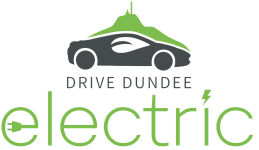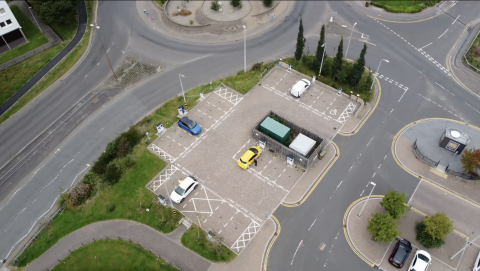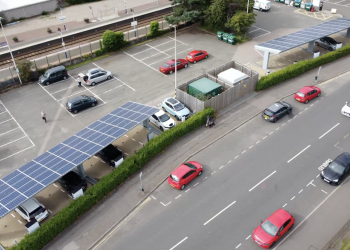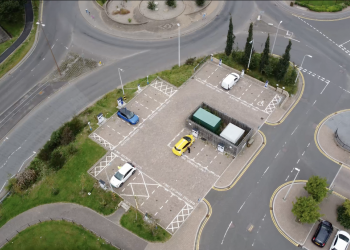Dundee City Council prioritises lowering emissions and improving city-wide air quality by building a network of rapid charging hubs

Dundee City Council - Drive Dundee Electric
Go To WebsiteAddressed Challenges:
- Air pollution
- Tech & innovation
- Carbon emissions
Action Areas:
- Transport
- Built Environment
Initiative Purpose:
- Adaptation
The Story

In 2016, Dundee successfully became an OLEV (Go Ultra Low) city which marked the start of the city providing comprehensive and innovative EV charging infrastructure. Dundee currently has 167 chargers and 313 charge points across the city, providing residents, Dundee City Council employees and varying institutions with a robust infrastructure for going electric. This includes 3 rapid charging hubs, 3 multi-storey charging hubs, on-street chargers and innovative pop-up chargers.
The focus of city projects has matured from providing a strong foundation of EV infrastructure to focusing on the sole use of renewable energy and moving away from dependence on the grid.
Following on from the opening of the city's Princes Street Charging hub, two other rapid charging hubs were built.
Dundee’s Queen Street multi-model charging hub was built in 2018 and opened in Broughty Ferry. The hubs consist of 6 rapid chargers and 4 fast chargers with solar canopies across the bays. This hub’s energy supply is also future proofed for any additional chargers to be installed when needed. Queen Street is a multi-model hub, providing close links to public transport and has e-bikes to incentivise drivers to engage in active travel and public transport. This gives commuters the option to leave their car outside of the city centre, lessening potential congestion and unnecessary pollution. Other key features of the hub include an interactive charging video screen which combines electric vehicle charging information with potential ad revenue.
Lochee Charging Hub was the first of 3 rapid charging hubs to be built using the Go Ultra Low cities funding programme. The location of this hub was based on commuter routes and followed on from a questionnaire sent to the city’s taxi drivers asking for their opinions on where the hubs should be sited. This site consists of 6 x 50kw and 4 x 22kw chargers and conducted more than 30,000 charging sessions in less than a year of opening. Additionally, in its first week of opening the hub saw 100 different users visit the hub and the chargers were used over 700 times.
Success & Outcomes
Renewable technologies, in particular photovoltaics, has been used to integrate renewables into local projects. In 2021, the city of Dundee used approximately 700,000kWh of energy over 49,000 charging sessions to refuel electric vehicles. Dundee City Council’s media campaign, Drive Dundee Electric, currently posts monthly charging updates. Results for January 2022 documented 7,921 charging sessions and 1,359 unique drivers which equates to 516,258 electric miles, 99.6 tons of CO2 savings and is equivalent to 598 trees planted.
Also, Dundee is currently home to one of the largest electric taxi fleets in the UK, where the first vehicle was introduced in 2015. There are currently over 165 electric taxis and private hire vehicles operating in Dundee (approximately 25% of the taxi fleet). Dundee City Council recognised early in their journey that for the long term, electric taxis and other commercial organisations would be key customers in making the charging network self-sustaining. Many electric taxi drivers in the city make use of the publicly available charging infrastructure to keep their vehicles topped up before, during, and after shifts and have accounted for up to 50% of the charging sessions at the rapid charging hubs. Having taxis utilising an alternative and cleaner form of transport also increases the visibility of electric vehicles within the community, starting a vital shift in conversation.
Advice for others looking to do something similar
The main obstacles when building this network of charging hubs were the complex but necessary application processes including applying for meters and substations. Both involved unpredictable time constraints and lack of external communication. This has taught our team here to factor in delays when planning these works and how to more efficiently working around them.


